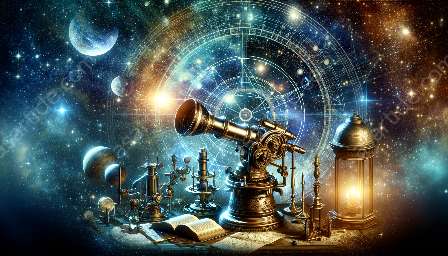The universe has always captivated the human imagination, and for centuries, astronomers have been endeavoring to unravel its mysteries. Through the development of innovative observational techniques, the field of astronomy has made remarkable strides in understanding the cosmos. This topic cluster aims to explore the interdisciplinary nature of astronomical observational techniques, delve into the role of optics in astronomy and astrophysics, and delve into the significant connections with optical engineering.
Optical Engineering: Building the Tools for Astronomical Observations
When we marvel at breathtaking images of celestial objects, it’s easy to forget the intricate engineering that lies behind these visual revelations. Optical engineering plays a pivotal role in designing and constructing the instruments that enable astronomers to capture the wonders of the universe. From ground-based telescopes to space-based observatories, optical engineers utilize state-of-the-art technologies to craft precision instruments capable of probing the depths of space.
Optical Principles in Astronomy and Astrophysics
The study of light, its interactions with matter, and the principles of optics form the foundation of observational techniques in astronomy and astrophysics. Understanding how light is collected, focused, and detected is crucial in designing instruments such as telescopes, spectrometers, and cameras. The field of optics in astronomy encompasses a diverse range of topics, including adaptive optics, interferometry, and the exploration of different regions of the electromagnetic spectrum.
Recent Advancements in Telescopic Technologies
Modern telescopes represent the cutting edge of astronomical observational techniques, offering unprecedented capabilities for exploring the cosmos. From the development of extremely large telescopes (ELTs) equipped with advanced adaptive optics systems to space-based observatories like the Hubble Space Telescope and the upcoming James Webb Space Telescope, these technological marvels epitomize the synergy between astronomical observations and optical engineering. They allow scientists to scrutinize distant galaxies, study exoplanets, and unravel the complex dynamics of celestial phenomena.
The Interplay of Data Processing and Optical Instrumentation
In the era of big data, the correlation between astronomical observations and optical engineering extends beyond the realm of hardware. Data processing and analysis are integral components of the observational process, necessitating the development of specialized optical systems for capturing, storing, and analyzing vast amounts of astronomical data. High-performance cameras, spectrographs, and advanced data processing algorithms are critical in turning raw observational data into meaningful scientific insights.
Astronomical Observations Across the Electromagnetic Spectrum
The universe reveals its secrets through a diverse range of electromagnetic radiation, spanning from radio waves to gamma rays. Optical engineering not only facilitates the capture of visible light but also extends its reach to other parts of the electromagnetic spectrum. Instruments such as radio telescopes, X-ray observatories, and infrared cameras exemplify the multifaceted nature of observational techniques in astronomy, where optical engineering converges with cutting-edge technologies to decipher the universe's enigmatic signals.
Challenges and Innovations in Astronomical Observations
The pursuit of ever finer details in astronomical observations poses formidable challenges, requiring innovative solutions that push the boundaries of optical engineering. Breakthroughs in adaptive optics, interferometric imaging, and multi-object spectroscopy represent some of the frontiers where academia and industry seamlessly collaborate to enhance the observational capabilities of astronomical instruments. As astronomers strive to peer deeper into the cosmos, optical engineering continues to pave the way for new realms of understanding and discovery.
Conclusion: Bridging the Worlds of Optics, Astronomy, and Engineering
At the forefront of exploration and discovery, astronomical observational techniques serve as a testament to the enduring synergy between optics in astronomy and astrophysics and the ingenuity of optical engineering. The marriage of scientific curiosity, technological prowess, and engineering excellence fuels the quest to unravel the universe's enigmas, propelling humanity into a new era of cosmic revelations.
From the empyrean realms to the very fabric of spacetime, the tools and techniques born of this interdisciplinary synergy continue to expand our understanding of the cosmos and ignite our imagination with the wonders of the universe.

